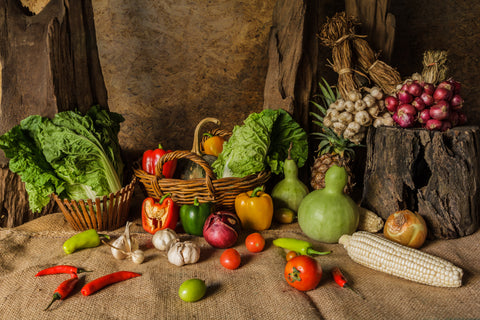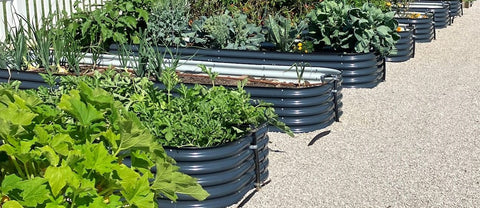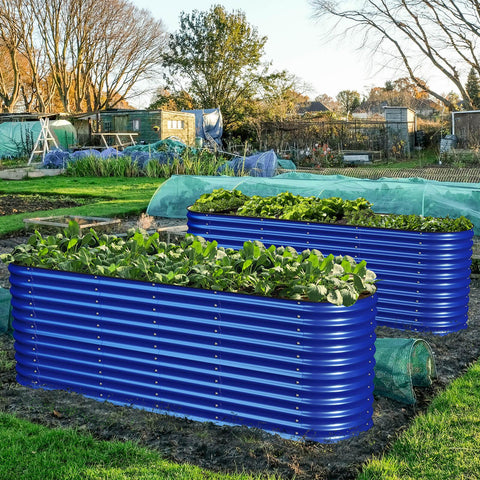Tips from Olle Garden Bed: How To Store Vegetable And Herb Seed Packs Correctly
If you are a passionate gardener, you undoubtedly have a lot of seed bags. If properly stored, seeds can survive for many years, but may become sterile under the wrong conditions. Read on to learn how to keep your precious flowers, heirloom vegetables and herbal seeds safe for use in the next season. The following content also has some reference value for raised garden beds.
You planted your garden, and now you still have seeds that you don't know how to deal with. Although the seeds may appear dry and lifeless, each pod contains plant embryos. At the end of the planting season, they can easily be collected from your garden for replanting in the future. Those you haven't sown can also be stored in the next season. However, how long your seed can be stored depends on the type of vegetable and whether it is stored correctly.
Regardless of plant type, storing seed packs in the right way is critical to germination and overall health. In this article, we will show you how long common seeds can be saved and how to properly store seed packages for future use. Use the following tips to store data packets correctly, and you can expect to plant your favorite plants again next year.

Make sure the seeds are the right variety
If you want to plant the same plants year after year, saving the seeds can make the process much easier. However, you must ensure that the seeds you plant are open pollinated varieties. Different from hybrid plants, these varieties will be restored to their original state, forming the same results as their parents. Make sure they're also your favorite choice: If you can't stand these things, it's pointless to grow a few acres of kale.
Dry the seeds before storing the seed package
Let the seeds fully mature before collecting them from the garden. Then, you can collect them and let them dry completely on a newspaper or paper towel for a week. When they are ready to be packaged, they should feel vulnerable. Write the types of seeds directly on the paper, so you don't mix them up and worry about them blowing away in the breeze. They should stick to talking on paper.
In addition, paper helps absorb excess moisture. For this reason, many people also store seeds directly in rolled paper. When you are ready to plant, all you have to do is tear off the pieces of paper towels and plant the seeds and paper directly into the soil. You can plant seeds as needed to keep the remaining seeds dry and protected.
Keep seeds dry
The seed package must be kept dry during storage. Pack the dried seeds in small paper bags, envelopes or plastic food storage bags. You can also use sealed containers, such as glass jars with tight fitting or gasketed lids.
Track seed package
The seed packs are grouped by plant type, and the expired seed packs are put together. Affix on each envelope the name of the plant, the date of collection and storage, the number of years the seed has survived, and any other important information. You should be able to find the seed package you are looking for at a glance and know exactly when each option expires before planting.
Provide further protection through sealed containers
Pests like rodents and insects like to eat seeds, so you need to protect your seeds. If you have been having problems with small animals eating your stored seeds, try putting them in glass Mason jars. Make sure the seeds are also out of reach. Storage locations that you can keep an eye on are ideal.
For best results, many gardeners choose to wrap the seeds in paper products, put them in paper envelopes, and then put the envelopes in sealed cans. Store seeds in the following sealed containers to further protect them from pests:
Metal container
Glass jar
Silk screen
Try to use milk powder for additional storage
Dry storage is essential for seed packs, but there are other ways to further preserve them. These components absorb any further moisture in the seed environment. However, you need to replace the packaging every six months or so.
Add two tablespoons of milk powder to four layers of thin paper, wrap the milk bag, and then put it into the storage container together with the seeds to keep the seeds extremely dry. Or, it is equally effective to put a bag of silica gel or raw rice kernels into a glass container containing seeds.

Store the seed package in a dry and cool place
Warmth and humidity are unfavorable to the shelf life of seed package. The best place to store seeds is in a dry, cool place, such as a refrigerator. If you use a refrigerator, you can place the seeds in an open storage container, such as a paper bag or envelope. Some gardeners also choose to use mesh bags. Paper should prevent seeds from getting wet.
You can store all seed packages in the same location, as long as you accurately mark and date them. This will let you know at a glance which still have planting potential.
Keep the temperature stable
Keep them away from the cold and direct sunlight of nearby refrigerators. Fortunately, today it is easy to stabilize the temperature and humidity levels of the house to create optimal storage conditions. If you store seeds in a basement or cellar, use a dehumidifier to reduce moisture in the air. For example, a basement can be especially damp.
However, short lived seeds may not perform well in storage. Any vegetable with low germination rate will be kept for a longer time when stored in the refrigerator, because the seeds will lose vitality at room temperature. When using this method, the seeds are put into transparent self sealing plastic bags to increase cold protection.
In general, refrigerators are a better storage option than basements or garages. However, refrigerators maintain more stable conditions, are more suitable for certain types of vegetables, and often provide more storage space. Some crops, such as onions, carrots, leeks and parsnips, perform better in the refrigerator.
Keep the seed package more suitable for storage
Before doing anything, select the seeds that are worth saving. Some vegetables are more suitable for preserving seeds, such as tomatoes, beans, peas and peppers. The flowers they provide are self pollinated, and the seeds usually require little special care before being stored.
On the other hand, the preservation of biennial crop seeds is more complex. They often need two growing seasons to solidify the seeds, which takes longer. These vegetables include carrots and beets.
In addition, (as mentioned earlier) ensure that open pollinated varieties are sought rather than hybrids. These varieties are often called heirlooms because they are passed down from generation to generation. They are also the most recent choices. These types of plants produce seeds that look almost identical to their parents.
Sometimes hybrids are very good at disease resistance, vigor and productivity. Certain options, such as tomato types, produce viable seeds that can be replanted. The purchase cost of hybrid seeds is higher, and plants will not be the same as their parents. It is almost impossible to predict the performance of hybrid seedlings or what will happen to fruits, which is why they are not stored.
Learn how long vegetable seeds can be stored
Many types of seed packs can survive for about two to three years, and there is nothing you can do to change their life expectancy. Vegetable seeds deteriorate at different frequencies. They will also vary depending on the variety of vegetables and your planting area.
Popular vegetable seeds can be stored for one to five years. Use the following seed storage guidelines for best results:
Sesame – 4 years
Beans – 3 years
Beets – 4 years
Broccoli – 3 years
Brussels sprouts – 4 years
Cabbage – 4 years
Carrots – 3 years
Cauliflower – 4 years
Celery – 3 years
Chinese Cabbage – 3 years
Kale – 5 years
Corn (sweet) – 2 years
Cucumber – 5 years
Eggplant – 4 years
Fennel – 4 years
Kale – 3 years
Chives – 2 years
Lettuce – 5 years
Okra – 2 years
Onions – 1 year
Parsley – 1 year
European parsnip – 1 year
Peas – 3 years
Peppers – 2 years
Pumpkin – 4 years
Radish – 4 years
Spinach – 2 years
Squash – 4 years
Swiss beet – 4 years
Tomatoes – 4 years
Radish – 4 years
Water celery – 5 years
Watermelon – 4 years

Preparation before planting
Instead of taking the seeds out of storage and immediately immersing them in the soil, let them warm up. Remove the container from the refrigerator or anywhere you choose to store them, and do not open the container until the seed package has a chance to heat to room temperature. If you miss this step, your seeds may gather and coagulate due to the moisture in the air.
Don't expect every seed to survive
Even the most organized gardener will not let every seed survive the storage process. Because all plants are different, some types of vegetables have low germination rates and can only survive for one or two years. For example, onions and sweet corn are seeds that family gardeners know to use quickly. But even if you plant the seeds in time, there is no guarantee.
No matter how careful you are, some seeds will not germinate. No problem
